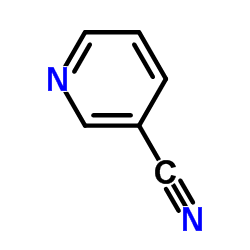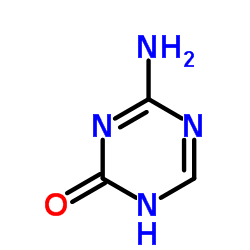123312-89-0
| Name | pymetrozine |
|---|---|
| Synonyms |
1,2,4-Triazin-3(2H)-one, 4,5-dihydro-6-methyl-4-[[(1E)-3-pyridinylmethylene]amino]-
Pymetrozin (E)-4,5-dihydro-6-methyl-4-(3-pyridylmethyleneamino)-1,2,4-triazin-3(2H)-one 6-Methyl-4-{[(E)-3-pyridinylmethylene]amino}-4,5-dihydro-1,2,4-triazin-3(2H)-one MFCD01632346 6-Methyl-4-[(E)-(3-pyridinylmethylene)amino]-4,5-dihydro-1,2,4-triazin-3-ol 6-methyl-4-{[(E)-pyridin-3-ylmethylidene]amino}-4,5-dihydro-1,2,4-triazin-3(2H)-one 1,2,4-Triazin-3-ol, 4,5-dihydro-6-methyl-4-[[(1E)-3-pyridinylmethylene]amino]- (E)-4,5-Dihydro-6-methyl-4-[(3-pyridinylmethylene)amino]-1,2,4-triazin-3(2H)-one 6-Methyl-4-{[(E)-pyridin-3-ylmethylen]amino}-4,5-dihydro-1,2,4-triazin-3(2H)-on 6-Methyl-4-[(E)-(3-pyridinylmethylene)amino]-4,5-dihydro-1,2,4-triazin-3(2H)-one 6-Methyl-4-{[(E)-pyridin-3-ylmethylene]amino}-4,5-dihydro-1,2,4-triazin-3(2H)-one pymetrozine 4,5-dihydro-6-methyl-4-[(E)-(3-pyridinylmethylene)amino]-1,2,4-triazin-3(2H)-one |
| Description | Pymetrozine is a feeding inhibitor of Homoptera, in preventing transmission of cauliflower mosaic caulimovirus by the aphid species Myzus persicae (Sulzer). |
|---|---|
| Related Catalog | |
| Target |
Homoptera[1] |
| In Vivo | Pymetrozine, a fast-acting and selective inhibitor of aphid feeding. In-situ studies with electronic monitoring of feeding behaviour. Pymetrozine, a pyridine azomethine compound, represents a novel insecticide with a selective activity against homopteran insects. It acts in a unique way: aphids are not knocked down on contact but seem to die of starvation. This implies an effect of Pymetrozine on feeding behaviour. The aim of the present work is to elucidate how and at which step Pymetrozine interferes with the complex mechanisms underlying phloem feeding. The effect of Pymetrozine, applied in various ways, on different phases of stylet penetration and feeding activity of individual aphids is studied using the Electrical Penetration Graph technique (EPG). Initial choice experiments indicated that Pymetrozine does not have a deterrent or antifeedant action. Topical application (150 ng/mg fresh weight) inhibits stylet insertion into the plant. When injected, less than 30 ng/mg is sufficient to produce the same effect. When Pymetrozine is systemically applied via plant spraying or root uptake, aphids started feeding normally. After some time, however, they withdrew their stylets from the phloem and walked around with unaffected locomotion. At low doses aphids eventually recovered and resumed feeding. High doses, however, irreversibly disrupted feeding and prevented stylet reinsertion. Aphid motility is not affected up to an estimated haemolymph concentration of 1 mM Pymetrozine. Aphids which eventually stopped feeding on Pymetrozine-treated plants showed EPGs with distorted salivation/ingestion patterns[2]. |
| References |
| Density | 1.3±0.1 g/cm3 |
|---|---|
| Boiling Point | 401.1±37.0 °C at 760 mmHg |
| Melting Point | 217ºC |
| Molecular Formula | C10H11N5O |
| Molecular Weight | 217.227 |
| Flash Point | 196.4±26.5 °C |
| Exact Mass | 217.096359 |
| PSA | 69.95000 |
| LogP | -0.50 |
| Vapour Pressure | 0.0±1.0 mmHg at 25°C |
| Index of Refraction | 1.665 |
| Storage condition | 0-6°C |
| Symbol |


GHS07, GHS08 |
|---|---|
| Signal Word | Warning |
| Hazard Statements | H332-H351-H412 |
| Precautionary Statements | P273-P281 |
| Personal Protective Equipment | Eyeshields;Faceshields;full-face particle respirator type N100 (US);Gloves;respirator cartridge type N100 (US);type P1 (EN143) respirator filter;type P3 (EN 143) respirator cartridges |
| Hazard Codes | Xn:Harmful; |
| Risk Phrases | R40;R52/53 |
| Safety Phrases | S36/37-S61 |
| RIDADR | NONH for all modes of transport |
| RTECS | XZ3018620 |
| HS Code | 2933699015 |
| HS Code | 2933699015 |
|---|---|
| Summary | 2933699015 4,6-dichloro-n-(2-chlorophenyl)-1,3,5-triazin-2-amine。supervision conditions:s(import or export registration certificate for pesticides)。VAT:17.0%。tax rebate rate:9.0%。MFN tarrif:6.5%。general tariff:20.0% |




